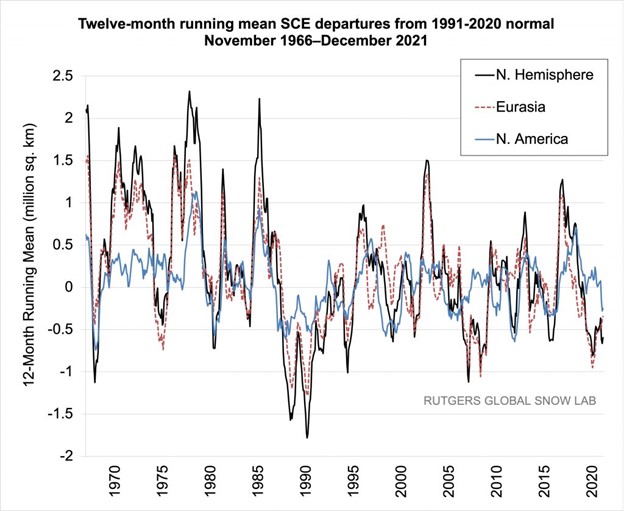WQAD ran a story reporting climate models predict climate change will make various types of weather events worse, titled “Climate change is spiking frequency, intensity of severe weather.” The story is misleading in couple of ways. First, although the title suggests climate change is already acting to make extreme weather worse, the story itself focuses on predictions for the future based on climate models, not current trends. Indeed, data does not support the claim that climate change has increased the frequency or intensity of tornadoes, thunderstorms, derechos, or snowstorms. Secondly, the climate models predicting that weather will become more extreme, are seriously flawed. They don’t reflect past or present temperatures accurately so their predictions of future climate should not be trusted.
“Severe weather in the Midwest can bring dangerous systems that develop quickly,” says the WQAD report. “A changing climate means better potential for tornadoes, thunderstorms, Derechos, and snowstorms to be even more powerful than before.”
While the first statement is absolutely accurate. The second claim is pure speculation. History and data indicate climate change could equally mean fewer, less intense storms across the region.
WQAD’s statements regarding tornadoes are cautious, and rightly so. In its most recent science report, Assessment Report 6 (AR6) released in July, the Intergovernmental Panel on Climate Change (IPCC) reports it has found no worsening of tornadoes during the period of modest warming and cannot attribute any changes in tornado frequency or strength to human caused climate change. Indeed, even as the number of reported tornadoes has increased due to better reporting over the past 50 years, data from the National Oceanic and Atmospheric Administration indicates the number of strong tornadoes has declined during the period of warming. (See the figure below)

Concerning thunderstorms, the facts are just as unalarming. As with tornadoes, IPCC AR6 reports no evidence thunderstorms are becoming more extreme, nor any evidence that any changes in thunderstorm frequency are attributable to human causes. One concern arising from extreme thunderstorms is the threat of flooding. Concerning that, the IPCC reports climate change is as likely to have reduced flooding as it is to have made flooding events more common. Also, on page 99 of the 2018 National Climate Assessment published by the National Oceanic and Atmospheric Administrations, its states, “Human-induced warming has not been formally identified as a factor in increased riverine flooding and the timing of any emergence of a future detectable human caused change is unclear.”
Concerning Derechos, as explained on Watts Up With That, these infrequent events are caused by a relatively rare confluence of weather conditions, and there is no evidence climate change is likely to make those conditions arise and coincide more often in the future.
The IPCC also reports there is no evidence winter storms are becoming more intense, delivering more powerful wind or greater amounts of snowfall. The IPCC’s report is confirmed by satellite data recorded by NASA. As discussed in Climate at a Glance: Snowpack, the extent of average North American snowpack has been virtually unchanged in recent years compared to the late 1960s, when satellite measurements began. Following a short-term decline in snowpack in the mid-1980s, average North American snowpack has increased. As shown in the figure below, what’s true of snowfall in the United States is true for most of the Northern Hemisphere as well.

Note that North America, represented by the blue dots, remains virtually unchanged in recent
years compared to the late 1960s, when satellite measurements first began. Source: Global Snow
Lab, “12-month Running Anomalies of Monthly Snow Extent from November 1966 to October 2021,”
Rutgers University Climate Lab, accessed February 2022, https://climate.rutgers.edu/snowcover/chart_anom.php?ui_set=0&ui_region=nhland&ui_month=2
One last thing WQAD should have considered before publishing its story hyping climate induced increases in extreme weather is the fact that the projections it references of worsening weather were produced using climate model simulations. Yet, as explored in Climate Realism, here, here, and here, for example, and in Climate Change Weekly, here and here, the general circulation models referenced by the IPCC are flawed and produce results that are woefully inaccurate. Models overstate warming and for more than 30 years have consistently predicted increases in extreme weather that have failed to materialize.
In the end, climate models are not scientific evidence, just like theories are not facts, and the evidence that exists indicates extreme weather events are not increasing. WQAD would do a great service to its audience, if it informed them of that. It might decrease any climate alarm inflamed anxieties those watching their reporting over the years have developed after years of seeing unverified climate change scare stories on the channel.

















